Ever wonder what winter in Korea really tastes like?
Once the cold sets in, you don’t find the answer in a fancy restaurant. You see it right on the street, where food stalls crowd every corner. Winter in Korea isn’t just cold weather. It is an experience in itself. Nights come early, and the streets feel alive in a whole new way.
The street carts glow in the dark. And the smell of sweet hotteok fills the air. Every bite gives you the unbeatable comfort of something hot on a freezing day. Turning a cold night into something special.
People huddle not only to warm their hands but also their hearts. The cold fades into the background. And the streets get filled with laughter and delicious smells. Giving people a moment to enjoy together
In this article, we will take a stroll through Korea’s popular winter snacks.
Hotteok
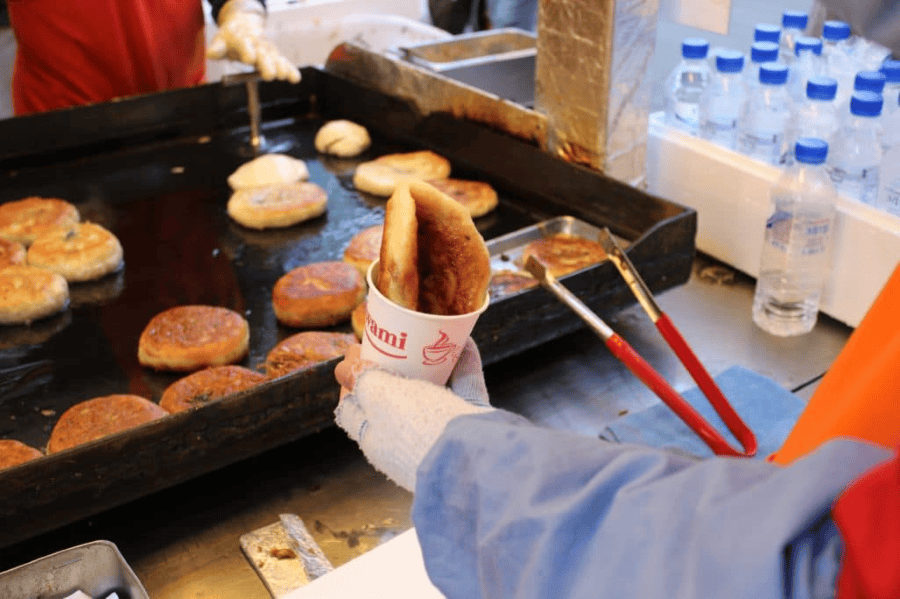
Hotteok is like a filled sweet pancake. It is stuffed with brown sugar and cinnamon. Sometimes you may also find seeds and nuts in the filling. This is the street food people dream about when the days get short and the nights turn icy.
Vendors start with a soft, yeasted dough. Sometimes with a splash of milk for extra tenderness. They stuff it, press it flat, and let it sizzle on a hot griddle- until it’s golden outside and gooey in the middle.
Over the years, hotteok has gotten creative. Some popular variations are-
- Chocolate
- Cheese
- Seasoned vegetables
- Red bean paste
- Tangerine jam
What makes hotteok special is how you eat it. Hands wrapped around a paper cup, and steam swirling up into the night. When it’s freezing out- hotteok feels like the warmest thing you can hold. No wonder it’s become a symbol of Korean winter.
Hoppang

These pillowy, steamed buns are basically winter’s answer to the question: “How do I keep my hands and my stomach happy at the same time?” You’ll spot them everywhere—convenience stores, subway stations, street stalls.
Hoppang is simple. A soft bun filled with something sweet or savory- most famously smooth red bean paste. Break one open, and hot steam escapes. It brings the kind of comfort that makes you pause in the middle of a busy day. The dough is slightly sweet, and the filling is warm. And for a moment- winter doesn’t seem so bad.
Red bean filling is the classic. But these days not the only option. Some popular variations include–
- Cheese
- Chocolate
- Veggies
- Sweet potato
- Pizza toppings
- Spicy bulgogi
Convenience stores- in particular- love to switch things up. It’s like a little dose of nostalgia wrapped in dough.
Gun goguma and Gunbam
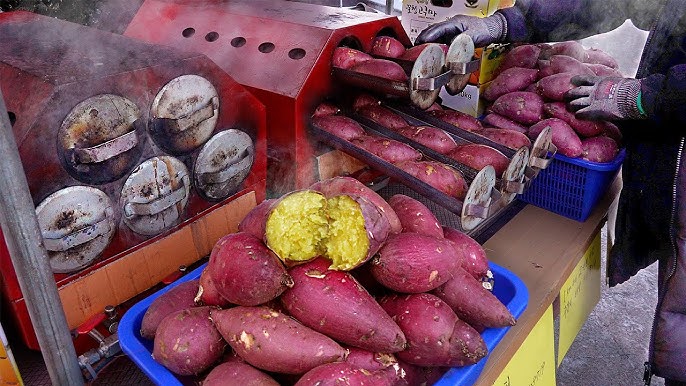
These roasted treats are the heart of Korean winter. No loud sizzle- just a quiet kind of warmth that sneaks in and makes you feel cozy.
Gun goguma is the classic. Vendors toss whole sweet potatoes into big metal drums. Roasting them- until the skins go crisp and the inside turns soft and sweet. Roasting brings out a deep, honeyed flavor- that just hits different in the cold. There’s nothing like wrapping your hands around a hot, sweet potato on a freezing day. It’s almost like getting a hug from the inside out.
Right next to the sweet potatoes, you’ll usually spot gunbam—roasted chestnuts. They’re smaller in size, but just as comforting. Vendors crack them open straight from the roaster. And inside you find golden, nutty bites that are a little sweet and floury. Roasting them takes some skill too. Getting the shells to split just right without burning the nuts is almost an art. And the best vendors know exactly how to do it.
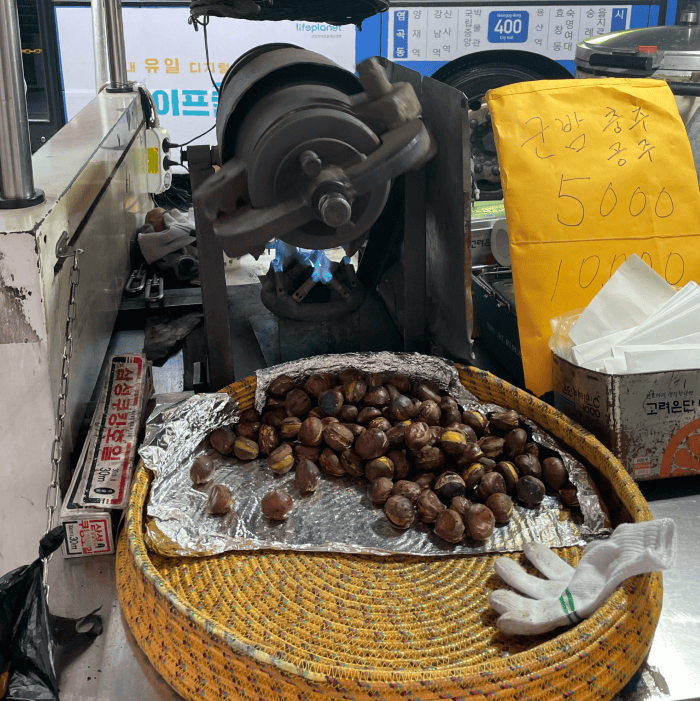
What really makes gun goguma and gunbam special is how simple they are. No fancy toppings, no sugary extras—just pure, natural flavor, made better by time and fire. They’re the snacks people remember from childhood. Eaten on the walk home from school or while wandering through the market with family.
Eomuk
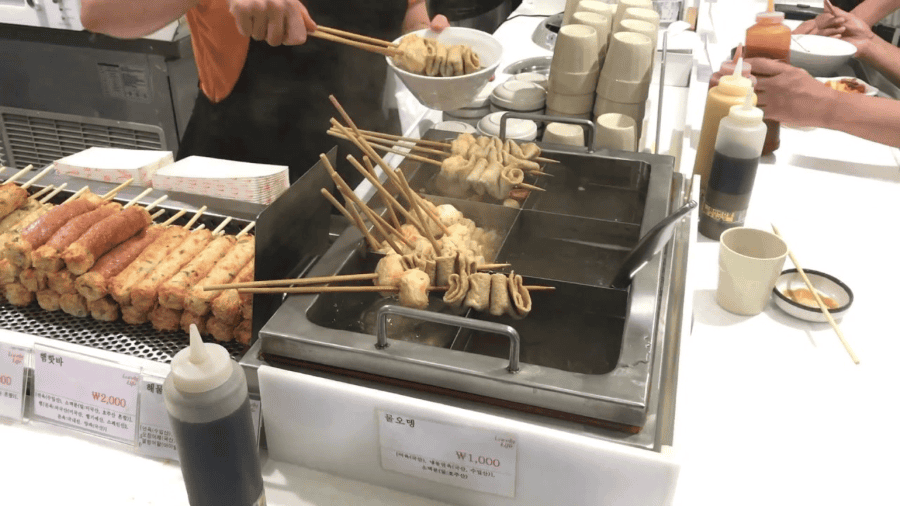
When winter hits Korea and that cold wind stings your face, there’s nothing quite like grabbing a hot skewer of eomuk. People call it odeng sometimes, but either way, it’s Korea’s go to fish cake.
Walk through a street market on a cold afternoon and you’ll see it right away. Long wooden sticks with folded fish cakes, steaming in a big pot of broth. It is made by mincing fish meat and mixing it with a bit of flour. And then deep frying it. While it can be served as stir fried, it’s commonly served as street food. Skewered and boiled in a flavorful broth.
People usually pour some broth into a paper cup and take a sip to warm up. Then they choose the fish cake skewer of their choice. Some are freshly added to the broth- giving them a chewy texture. While others have been simmering longer- resulting in a softer, more tender texture. Drinking the warm broth alongside adds a comforting heat that spreads through your whole body. Making winter feel a lot less harsh.
Bungeoppang
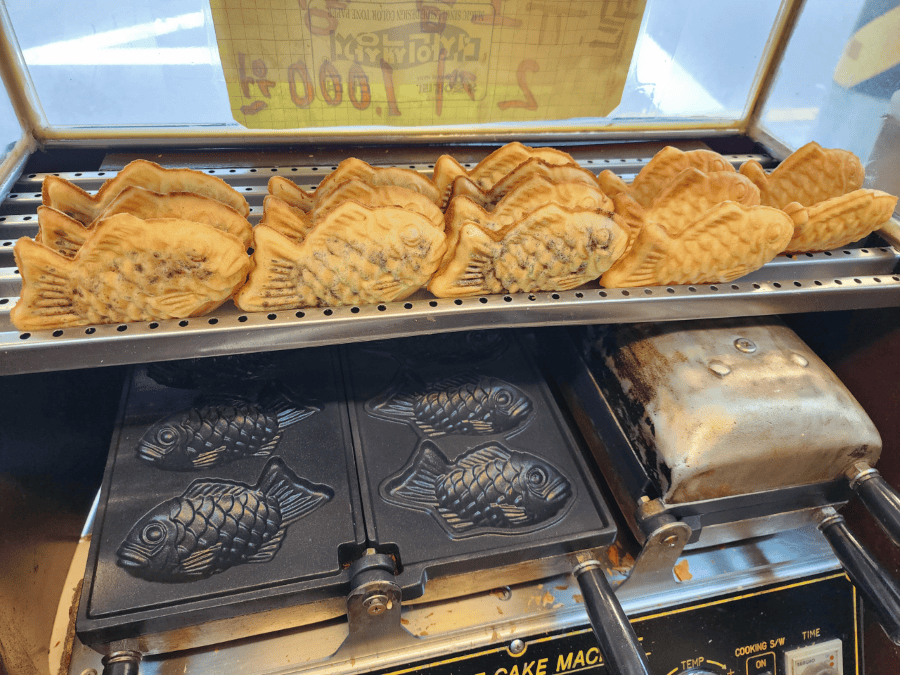
You can’t really talk about Korean winter snacks without mentioning bungeoppang. These are fish shaped pastries that get filled with sweet red bean paste. But don’t worry, there is no actual fish in it.
Making bungeoppang is pretty simple. A thin batter is made by mixing flour with water until smooth, then poured into a kettle. The batter is poured into a fish shaped mold. And then a generous spoonful of red bean paste is added. Another layer of batter is poured on top. The cast iron mold is then closed and flipped over to ensure even cooking. Beneath the mold- a gas flame keeps it cooking to golden perfection. Red bean is the classic filling. But these days you’ll see bungeoppang stuffed with custard cream and cheese.
The best part? The contrast.
They’re crisp on outside and fluffy inside. Always tasting best when they’re still steaming. People have their own ways of eating bungeoppang. Some start from the fish’s mouth, others from the tail.
Vendors usually sell them by the bag- for just a few bucks, so everyone can grab a handful. Eating bungeoppang on a snowy street- is just one of those classic winter things in Korea.
Conclusion
These snacks are like- little bursts of warmth in the middle of the cold. Giving a chance to slow down for a minute. Turing busy streets into places where people laugh together. And make some sweet memories while enjoying something delicious.
So, if you ever find yourself wandering in Korea during winter, then just follow your nose. These snacks will help you experience the true winter rhythm in Korea.
Written by – Aparna Sharma

About the Author –
Aparna has a deep curiosity for languages and global cultures. She enjoys diving into stories that offer fresh perspectives and meaningful connections. For her, writing is a way to process ideas and connect with others who share similar interests.
